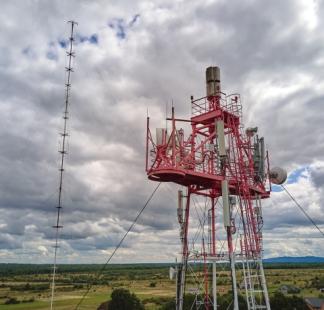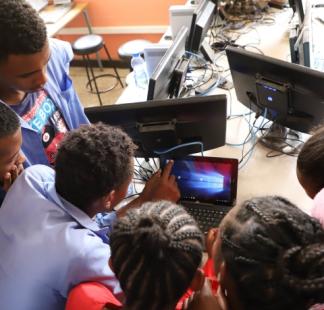- Jonathan Mwakijele
- Annitah Rodah Natwati
Intermediate
- Bank transfer
- Credit card
- M-pesa
Event Organizer(s)

Description
This course covers spectrum engineering foundations for students to be able to perform link budget calculations, interference analysis, and provide an understanding of 3D propagation modeling for radio communications services frequency planning. This is intended to support modern spectrum management. The aim of this course is to provide students with spectrum engineering foundations in order to be able to perform link budget calculations, interference analysis, and provide understanding of 3D propagation modelling for radio communications services frequency planning. This is intended to support modern spectrum management.
This training is targeted at those who are entering the regulatory environment and are interacting with technologies as operators, developers, or managers. It is targeted at those aiming to understand the workings of various technologies to develop a general overview of trends.
This may include professionals working in the telecommunications industry, lawyers, and regulatory staff across all departments.
Besides that, other institutions and individuals who are dedicated to building their capacity related to new technologies are welcome to participate.
Participants are expected to have completed SMTP - Legal basis and regulatory framework or have knowledge in Spectrum Management. Participants are also expected to be working for a regulator, or in the ICT/Telecoms sector as a provider or consultant.
- Describe the essential technical foundations on radio wave propagation phenomena and behavior.
- Perform link budget calculations and interference analysis.
- Analyze the spectrum space occupied by radiocommunications systems.
- Evaluate spectrum usage efficiency.
- Identify the main characteristics of most used modulation schemes.
- Explain the historical perspective of radio spectrum usage, its evolution, and the behavior of radio waves to support planning, assigning, and controlling different service emission parameters for optimum radio spectrum exploitation.
- Instructor-led online learning with presentations, case studies, exercises, and assignments.
- Live lectures and discussions through ZOOM every Monday and Wednesday from 1500 Hours to 1700 Hours EAT (GMT+3).
The evaluation is based on:
• Participation in all 4 Forums (12%)
• Assignment 1 (10%)
• Assignment 2 (10%)
• Assignment 3 (10%)
• Assignment 4 (10%)
• Assignment 5 (10%)
• Assignment 6 (10%)
• End of Course Assignment (28%)
A total score higher than 70% is required to obtain the ITU certificate.
WEEK 1
- The Radio Spectrum
- The radio spectrum characteristics
- Telecommunications Units
- Modelling the three-dimensional space using the sphere
Training activities details
Live lecture & discussion 1: Monday and Wednesday.
Forum topic 1: Is Spectrum a limited resource? Do you see the glass as half full or half empty?
Read Week 1-course materials
Assignment 1: Wednesday
Assignment 2: Friday
WEEK 2
- Basic antenna parameters: Radiation patterns, beam efficiency, driving impedance, antenna operation bandwidth, directivity and gain, directivity and resolution, and apertures.
- Modelling the antenna
- Polarization, antenna isolation, and frequency reuse
Training activities details
Live lecture & discussion 2: Monday and Wednesday.
Forum topic 2: How essential is an understanding of propagation models for the deployment of communications?
Read week 2-course materials
Assignment 3: Wednesday
Assignment 4: Friday
WEEK 3
- General concepts on radio communications
- ITU-R recommendations
- Medium and high-resolution digital cartography, DTM, DCM, clutters, coordinates, datum.
- Amplitude modulation, frequency modulation, digital modulation schemes, spread spectrum, and OFDM
Training activities details
Live lecture & discussion 3: Monday and Wednesday.
Forum topic 3: Discuss the feasibility of Digital Radio migration in your territory.
Read week 3-course material
Assignment 5: Wednesday
Assignment 6: Friday
WEEK 4
- Interference, C/I and I/N
- Broadcasting services network design and coverage analysis
- Cross-¬border frequency coordination principles and international agreements
- EMF human exposure limits, calculation, and evaluation of exposure to non-ionizing radiation
Training activities details
Live lecture & discussion 4: Monday and Wednesday.
Forum topic 4: EM Exposure. To what extent is this an area of enforcement as a regulator?
Read week 4 course materials
End of Course Assignment: Friday











